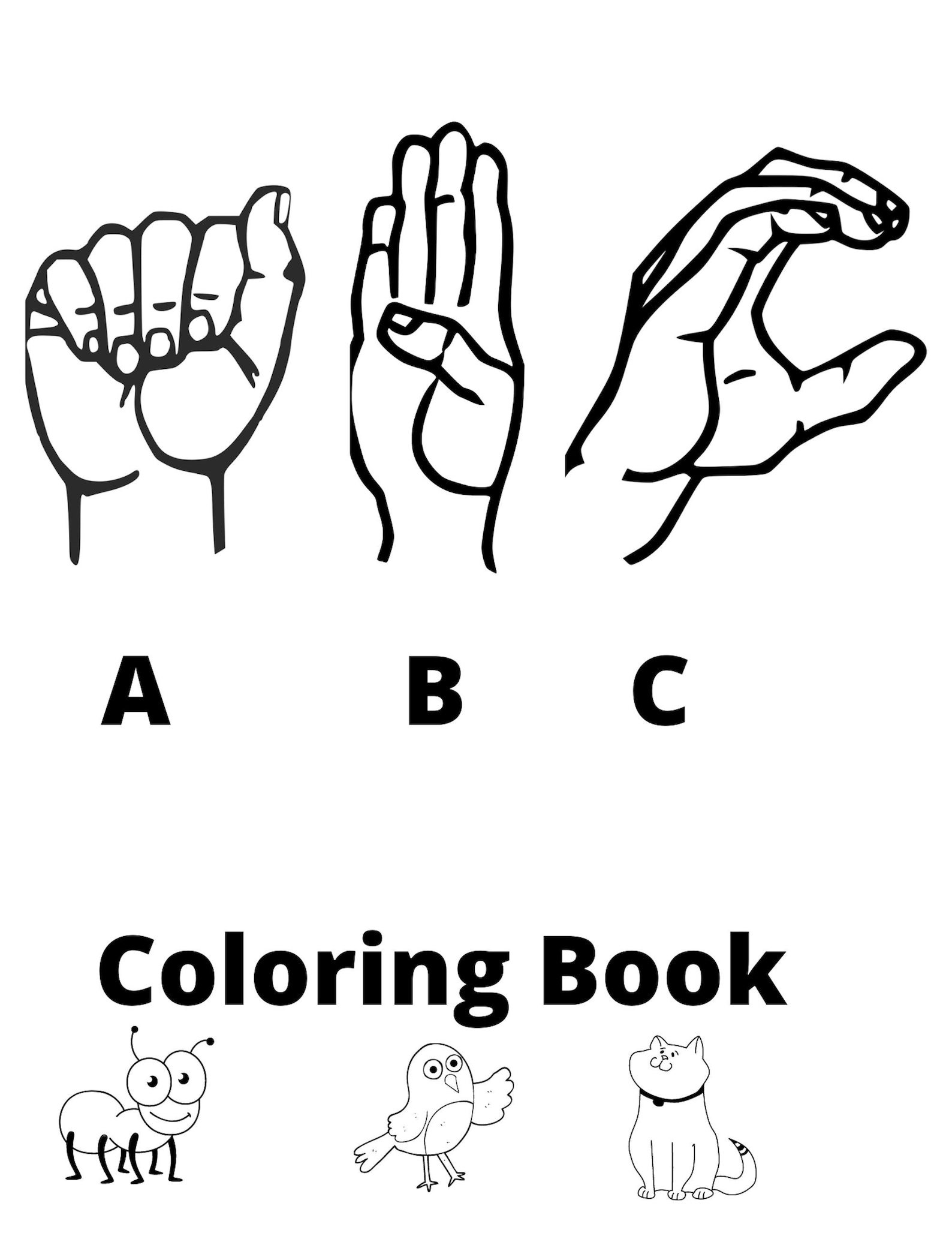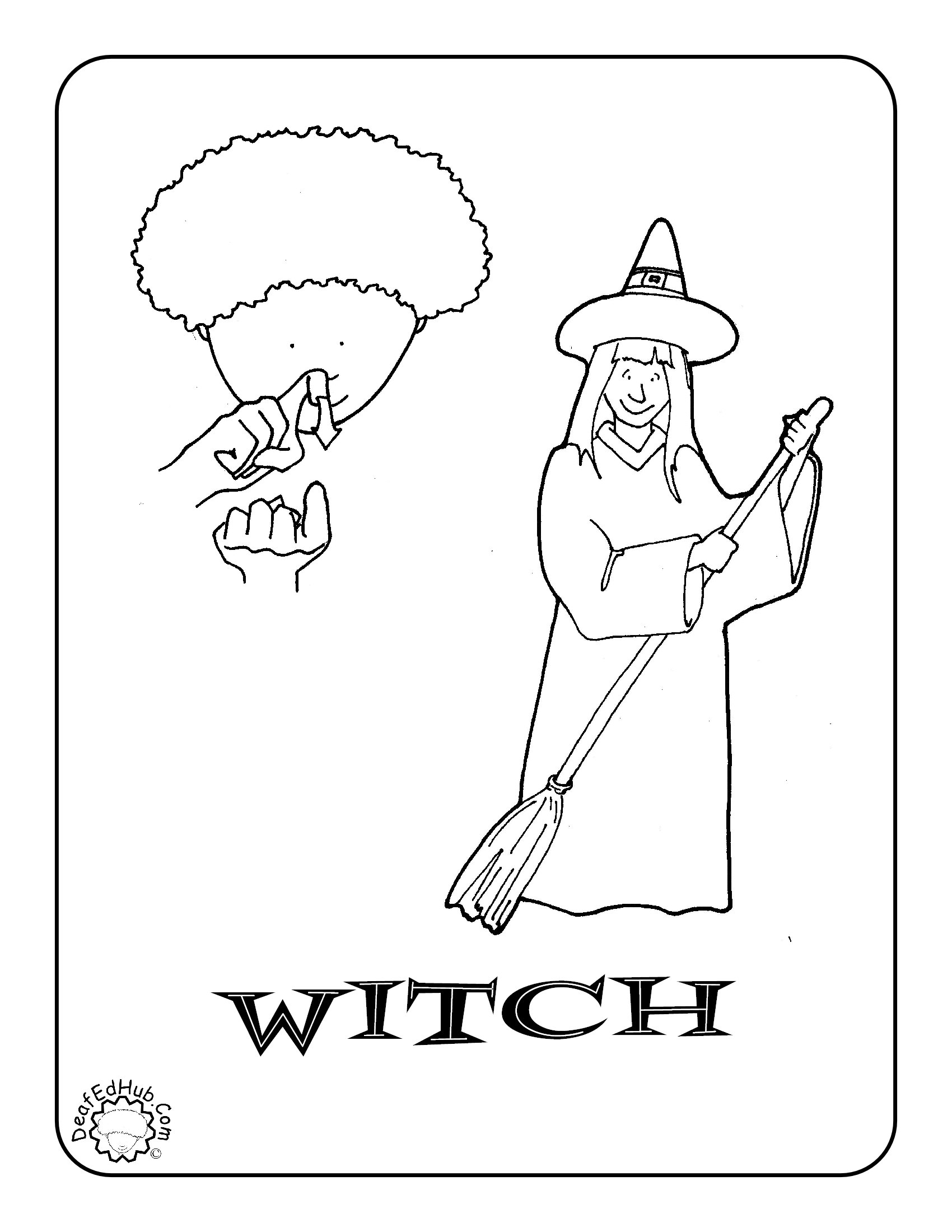Coloring can be a great way to relax and unwind, but for those who are deaf or hard of hearing, traditional coloring books may not be as accessible. That’s where sign language coloring books come in. These specialized books feature illustrations of sign language symbols and signs, allowing individuals to not only express themselves through color but also learn and practice sign language in a fun and interactive way.
1. History of Sign Language Coloring
In the world of coloring books, there is a unique niche for sign language coloring books. These books feature images of hands making various sign language gestures, along with the corresponding letters of the alphabet. The history of sign language coloring books dates back to the 1970s, when they first started to appear on the market.
2. Benefits of Sign Language Coloring
There are many benefits to coloring in sign language. For starters, it can help improve hand-eye coordination and fine motor skills. Additionally, coloring in sign language can help children learn the alphabet and basic sign language gestures. It is also a great way to promote inclusivity and understanding of different communication methods.

Source drlanguage.org
3. Educational Value of Sign Language Coloring
Sign language coloring books can be a valuable educational tool for children of all ages. By coloring in sign language images, children can learn the alphabet, practice their fine motor skills, and gain a greater understanding of communication methods used by people who are deaf or hard of hearing.

Source www.etsy.com
4. Popular Themes in Sign Language Coloring Books
Sign language coloring books come in a variety of themes, from the alphabet to animals to holidays. Some popular themes include sign language interpretations of popular children’s stories, such as “The Very Hungry Caterpillar” or “Brown Bear, Brown Bear, What Do You See?” These themed coloring books can be a fun and educational way to engage children in learning sign language.
5. How to Use Sign Language Coloring Books
Sign language coloring books can be used in a variety of ways. They can be used in the classroom to teach children about sign language and the alphabet, or they can be used at home as a fun and educational activity. Parents can also use sign language coloring books to help their children learn basic sign language gestures.

Source www.pinterest.com
6. Creating Your Own Sign Language Coloring Pages
If you can’t find a sign language coloring book that suits your needs, you can always create your own sign language coloring pages. There are many resources online that provide free printable sign language coloring pages, as well as tutorials on how to create your own custom pages. This can be a fun and creative way to engage with sign language.

Source www.pinterest.com
7. Sign Language Coloring Apps
In addition to traditional coloring books, there are also sign language coloring apps available for smartphones and tablets. These apps allow users to color in sign language images digitally, offering a new and interactive way to engage with sign language. Some apps even include games and activities to further enhance the learning experience.
8. Importance of Inclusivity in Sign Language Coloring
Sign language coloring books play an important role in promoting inclusivity and understanding of different communication methods. By incorporating sign language into coloring books, children can learn about and appreciate the diversity of communication styles. This can help foster a sense of empathy and acceptance towards individuals who are deaf or hard of hearing.
9. Sign Language Coloring as a Therapeutic Tool
Coloring has been known to have therapeutic benefits, such as reducing stress and anxiety. When combined with sign language, coloring can also be a therapeutic tool for individuals who are deaf or hard of hearing. Coloring in sign language images can provide a sense of empowerment and connection to one’s identity, making it a valuable therapeutic activity.

Source www.etsy.com
10. Conclusion
Sign language coloring books are a unique and valuable resource for individuals of all ages. Whether used for educational purposes, as a therapeutic tool, or simply as a fun activity, sign language coloring books can help promote inclusivity, understanding, and appreciation of different communication methods. Consider adding a sign language coloring book to your collection and start exploring the world of sign language through coloring today!

Source depositphotos.com
1. The Benefits of Coloring in Sign Language
Coloring in sign language can be a fun and educational activity for both children and adults. It helps improve fine motor skills, hand-eye coordination, and creativity. Additionally, coloring in sign language can also help reinforce vocabulary and recognition of sign language symbols.
2. Popular Sign Language Coloring Books
There are a variety of sign language coloring books available that cater to different age groups and skill levels. Some popular options include “ASL Alphabet Coloring Book,” “Sign Language for Kids Coloring Book,” and “American Sign Language Coloring Book.”

Source getdrawings.com
3. Tips for Coloring in Sign Language
When coloring in sign language, it’s important to pay attention to the different symbols and signs. Use a variety of colors to make your artwork pop, and don’t be afraid to get creative with your interpretations of each sign. Remember that practice makes perfect, so keep coloring and improving your skills.
4. Incorporating Sign Language Coloring in Learning
Coloring in sign language can be a fun way to incorporate learning into your daily routine. Whether you’re a teacher looking for new activities for your students or a parent wanting to teach their child sign language, coloring can be a great tool for reinforcing vocabulary and language skills.
5. Creating Custom Sign Language Coloring Sheets
If you can’t find the perfect sign language coloring book, why not create your own custom coloring sheets? You can easily find sign language symbols online or in reference books, and then create your own coloring pages using a printer or drawing them by hand. This way, you can personalize your coloring experience and focus on the signs that interest you the most.
6. Social Media Communities for Sign Language Coloring Enthusiasts
Joining social media communities dedicated to sign language coloring can be a great way to connect with fellow enthusiasts and share your artwork. You can find inspiration, tips, and even participate in coloring challenges to improve your skills and expand your knowledge of sign language.
7. Sign Language Coloring Events and Workshops
Keep an eye out for sign language coloring events and workshops in your area. These gatherings can be a great opportunity to meet like-minded individuals, learn new techniques, and participate in group coloring activities. It’s also a chance to immerse yourself in the world of sign language and expand your skills in a supportive environment.

Source www.etsy.com
8. Online Resources for Sign Language Coloring
If you prefer to color at your own pace from the comfort of your home, there are plenty of online resources available for sign language coloring. You can find printable coloring sheets, tutorials, and even digital coloring apps that cater to sign language learners of all ages.

Source getdrawings.com
9. The Therapeutic Benefits of Sign Language Coloring
Coloring in sign language can also have therapeutic benefits. It can help reduce stress, improve focus and concentration, and promote relaxation. Whether you’re a beginner or an experienced signer, taking time to color and focus on the symbols can be a great way to unwind and express yourself creatively.
10. Conclusion
Coloring in sign language is not only a fun and creative activity but also a valuable learning tool. Whether you’re a sign language enthusiast looking to improve your skills or a parent teaching their child new vocabulary, coloring in sign language can be a rewarding experience. With the variety of resources available, from coloring books to online communities, there are endless opportunities to explore and enjoy the world of sign language coloring.

Source depositphotos.com
The Benefits of Sign Language Coloring for Children

Source drlanguage.org
Sign language coloring can provide numerous benefits for children of all ages. Here are some reasons why incorporating sign language coloring into a child’s routine can be beneficial:
1. **Enhances Fine Motor Skills**: Coloring helps children develop their fine motor skills by allowing them to practice using precise hand movements and coordination. This can be especially beneficial for children who may have challenges with fine motor control.
2. **Promotes Creativity**: Coloring can also help foster creativity and imagination in children. By giving them the opportunity to choose colors and create their own designs, sign language coloring can encourage children to think outside the box and express themselves in a unique way.
3. **Improves Hand-Eye Coordination**: Coloring within the lines of sign language images can help improve a child’s hand-eye coordination. This skill is important for tasks such as writing, drawing, and even playing sports.
4. **Encourages Language Development**: By combining sign language with coloring, children can also learn to associate specific signs with corresponding images. This can help reinforce their understanding of sign language and aid in their language development.
5. **Reduces Stress and Anxiety**: Coloring has been proven to have a calming effect on children, reducing stress and anxiety levels. This can be especially beneficial for children who may struggle with communication or find it difficult to express themselves verbally.
In conclusion, sign language coloring can be a fun and educational activity for children that offers a wide range of benefits. By incorporating sign language coloring into a child’s routine, parents and educators can help promote creativity, improve fine motor skills, enhance language development, and reduce stress and anxiety.
Thanks for Coloring in Sign Language!
I hope you had fun exploring the world of sign language through coloring! Keep practicing your signs and maybe next time you can write your own messages in sign language. Remember to visit us again for more coloring pages and sign language resources. Thanks for reading and happy signing!